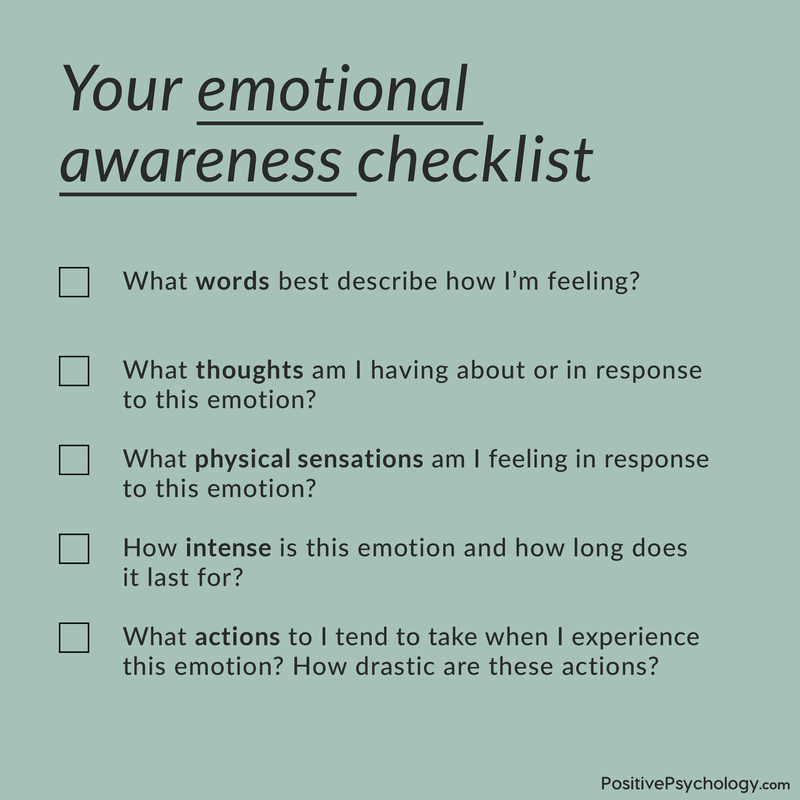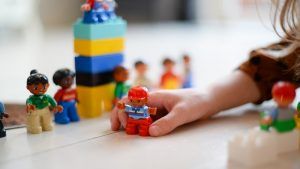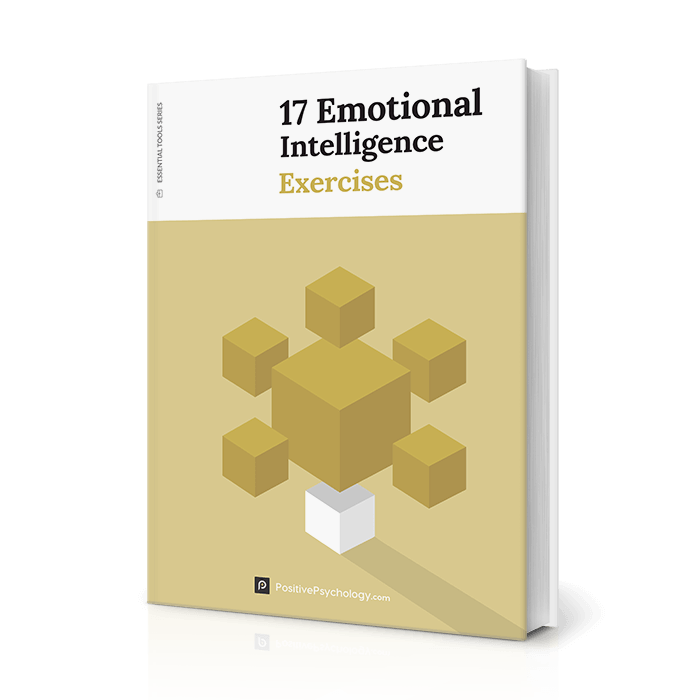7 Games for Emotional Intelligence in Children
If you’re after a fun game to play with your students or children, we’ve picked a few to cover several different stages of development.
1. Conversational EQ card game
Conversational EQ is based on neuroscientific fundamentals; it’s designed to ‘train your brain’ for Emotional Intelligence. There are many different levels, with the Prime Six Courage Club most suited for kids of a reading age (around 5 years old or so).
Also called the Starter Deck for Emotional Intelligence, the P6CC has been developed to help children develop their social skills, emotional capacity, and more. It’s suited for 2-4 players, and the 54 card deck features three main types of cards, each with a certain number of ‘coins’ drawn on the back.
Here’s one way (of many) to play:
- Shuffle the 54 cards and put them in the center of the group, then pick a player who will begin the game.
- Each player in turn then takes a card.
- If they pick a ‘Feel’ or Think’ card, they make a statement using the words ‘I feel…” or “I think…”. The statement should relate to the emotion that’s on the card, such as Nervous, Angry, or Calm.
- If the player picks an ‘Ask Permission’ card, they come up with an “I feel…” statement, then ask other players if you can share your thoughts. Follow this through with an “I think…” sentence.
- Lastly, a player might pick an ‘Open Question’ card. They then offer an “I feel…” sentence, and the player beside them will pose an open-ended emotional intelligence question about that statement. While answering, the player should use an “I think…” statement.
You can either play until someone reaches a predetermined number of coins, or for a set number of rounds—the choice is yours.
2. Simon says
Simple, easy, and a favorite with very young kids. With the right instructions, you can use this timeless game to teach kids Theory of Mind, as well as how to express their emotions.
If you’ve never played Simon Says with children before, explain the rules. Basically, explain that they’ll need to pay close attention to what you’re saying. That is, to follow instructions only when you start by saying: “Simon Says!” Give them a heads up that you’ll be testing their listening skills, so they have to stay sharp listeners throughout.
The game can have several rounds, but you’ll only be giving the kids visual cues (facial expressions, gestures, and so forth) to match your instructions in Round One. For each round, they’ll match your actions…but remember—only when “Simon Says”!
Round One: Start by telling the children what emotions to express, while modeling the behavior yourself. For example:
Simon Says: Do a sad face (pout, stick out your bottom lip);
Simon Says: Stand up tall and be confident; or
Simon Says: Touch your nose (here you can ‘trick’ them and do something else instead).
Round Two: Continue giving verbal instructions for children to carry out. In this round, however, you’ll only provide visual cues for every other instruction. Good examples include:
Simon Says: Your brain is confused (Scratch your head & roll your eyes in confusion);
Simon Says: Your feelings are hurt; and
Simon Says: You’re alert and wide awake! (A ‘trick’ one: Look tired, sleepy, and yawn)
Rounds Three, Four, and Five: Here you continue the verbal instructions, asking the kids to express different emotions such as surprise, worry, and amusement—whatever seems most appropriate. Only join in on the last ‘trick’ one, where you give one instruction, but do something else instead.
Each of the instructions that you give the kids should encourage them to express different feelings, thoughts, or intentions. By recognizing and expressing these emotional states, they can learn to develop awareness and empathy, important parts of the Theory of Mind.
We found, and slightly adapted, this great Emotional Intelligence game at Play Based Parenting, which you can find here in its full form.
3. Stop, relax & think
Kids between 6 and 12 years old might enjoy learning to control impulsive behaviors with the Stop, Relax & Think board game. It’s been created for therapists and those who work with children, such as counselors and professionals. It’s quite frequently used in these contexts to diagnose and treat impulsive emotional behavior.
Stop, Relax & Think includes tokens, several different-sided dice, card decks, and little characters to represent each person. Just like with many other board games, it’s suited for anywhere between two and six players.
Kids work their way through four sections of the board: Feelings, Stop, Relax, and Think, and collect tokens for completing different activities. For example, in the Feelings section, they pick, read, and answer a card from the Feelings deck. In the Stop section, they take a specific Stop card until another player says “Stop”. This helps kids learn to control their behaviors and check involuntary, emotional responses.
Head over here to Child Therapy Toys to buy Stop, Relax & Think.
4. Which emotion am I?
Recognizing emotions is a key part of Emotional Intelligence and a skill which helps children navigate social interactions more smoothly. In order to gauge the appropriateness of a response in a specific situation, kids first need to understand and be able to relate to others’ feelings. Which Emotion Am I is a guessing game that teaches kids to distinguish emotions through facial expressions.
To play, you will need something like a rubber band or similar that the kids can use to keep a card attached to their heads. You will need to draw or download some emotions cards such as the PDF examples provided here at Childhood 101. Then:
Shuffle the cards and put them in the center of the group;
Invite each child to choose a card and place it in their headband. The aim is for every other player to be able to see the card, but not the child wearing it;
Move around the table. When it’s a player’s turn, they can ask one question about their card—but they can’t use actual emotion names (worried, nervous, surprised, etc.) Instead, they should ask a question with a yes or no answer, related to the emotion. For instance: “Would I feel like this if I bumped my head?” “Would I feel this if I was opening a present?” The other players will then give a yes or no answer.
Once a child believes they’re ready to correctly identify the emotion on their card, they can use their turn to do so. They’ll then win that round, but the game continues on until each emotions card has been figured out.
Check out the Which Emotion Am I? Game and download some ready-to-use emotions cards here.
5. The social and emotional competence game
Here’s a popular board game with therapists—the Social and Emotional Competence Game takes players on a twisty path through five sections of the board. These are: caring, communication, getting along, sharing feelings, and cooperating.
Developed by Child Therapy Toys’ founder Dr. Gary Yorke, it features different cards for each skill. Children answer the different questions given on each card, which aim to help them manage and recognize emotions, empathize, problem-solve, and more.
You’ll find the Social and Emotional Competence Game here at Creative Therapy Store.
6. Self-esteem jenga
Self-esteem and Emotional Intelligence have been shown to have a positive and significant correlation with one another (Ciarrochi et al., 2000). The fun part is, it’s easy to create your own self-esteem game from a set of Jenga tiles. You’ll need something with which to write on these tiles, but otherwise, it’s pretty simple.
Simply unpack the Jenga tiles and write either an activity, question, or prompt. Even sentence stems work, use your imagination! Some nice examples include:
- What is your favorite thing about the person on your left?
- I’m really good at…
- Tell the others about something you have done that you are proud of.
- What is something that your friends like about you?
- Tell us about a time that you accomplished something great.
- What is something that made you really happy recently?
Once you’ve completed all the tiles, you’re ready to play Self Esteem Jenga. Put your tower together and take turns pulling out a tile. Each time a player pulls out a tile, they should answer the question, complete the sentence, or act out the activity on the tile before putting it back on top of the tower.
Try to keep the tower upright for as long as possible—that’s one of the aims of the game.
The other, of course, is to provide kids with an opportunity to reflect on their own (and others’) strengths and qualities. Through this exercise, they get to hear self-esteem enhancing reflections from those around them.
Here is the Self Esteem Jenga game at its source.
7. Fox and the rabbit
Fox and Rabbit is a group game that helps in teaching kids self-management, and all you need to play are two different types of ball. These can be different colors or shapes, it’s up to you—name one “Rabbit”, and the other “Fox”.
Start by getting the kids to stand in a circle, and give one of the balls to a kid on one side. Give the other to a player on the opposite end so that one has Fox, and one has Rabbit.
One main rule of the game is that neither Fox nor Rabbit can be held for longer than one second. What makes it tricky is that Fox is trying to catch Rabbit, while the latter’s busy trying to escape from Fox.
This means that if a kid has Rabbit, they need to make a split-second judgment of where Fox is and move Rabbit quickly to the next child in the opposite direction. If they have Fox, they need to pass it along to the next player in the direction of Rabbit. You can add a points system into the game if you like, by awarding a child a point for each a kid with Fox manages to ‘catch it’. That is, when they pass Fox to the player who is currently holding Rabbit.
Here is the Fox and Rabbit game at Playworks.
6 Cartoons And Images For Children
Visual aids are great tools to help kids learn. Watch these videos with them and respond to their questions afterward.
 What’s the best way to teach Emotional Intelligence to kids?
What’s the best way to teach Emotional Intelligence to kids? How do we know if our kids are developing Emotional Intelligence?
How do we know if our kids are developing Emotional Intelligence?
 If you noticed (and maybe shook your head at) the ‘Dad kicked the wall’ example a bit earlier, that’s a good example of how parenting does play a role in EI development.
If you noticed (and maybe shook your head at) the ‘Dad kicked the wall’ example a bit earlier, that’s a good example of how parenting does play a role in EI development.
 EI is about social skills as much as it is about self-awareness.
EI is about social skills as much as it is about self-awareness.
 We can start with the very basics—by creating a safe space in which kids feel supported and free to express their emotions.
We can start with the very basics—by creating a safe space in which kids feel supported and free to express their emotions.



What our readers think
Thank you for sharing this insightful blog ! It’s a valuable resource for parents and educators alike. Understanding and nurturing emotional intelligence in children is crucial for their overall development and future success. Your blog provides tips and guidance, making it easy for readers to implement these strategies in their daily interactions with kids. Keep up the great work in spreading awareness about this important topic!